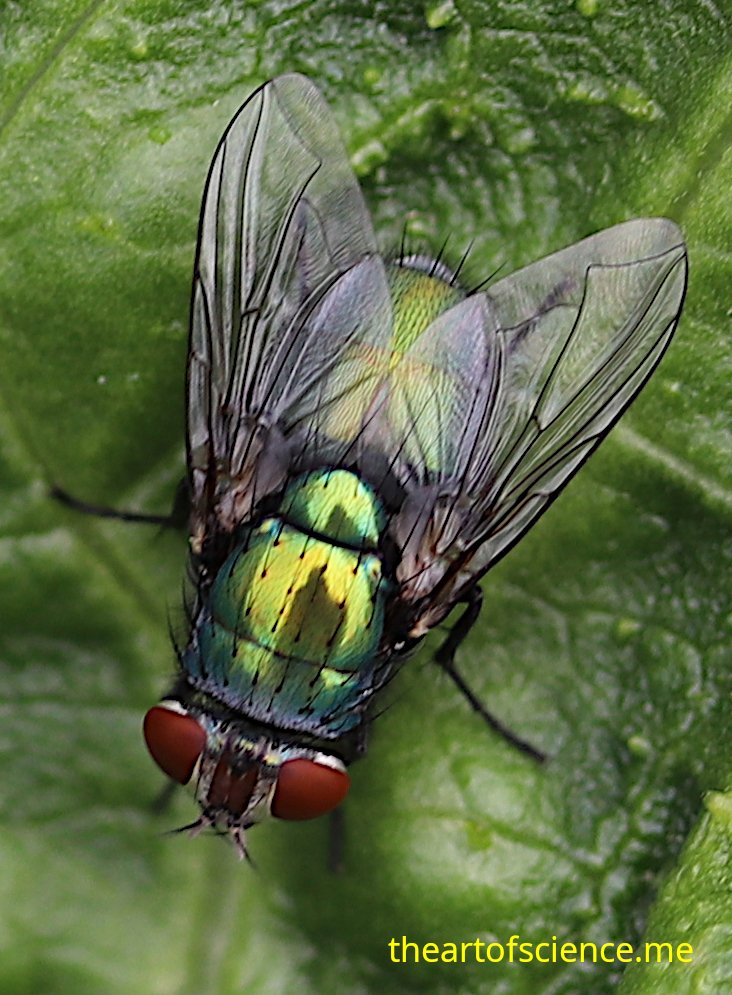A solitary green bottle with onboard advanced drone technology.
My tiny vegetable garden has many surprises.
I found a green bottle fly stationary on a capsicum leaf. The rain had stopped; it was alone with big, sad eyes.
Female green flies flash to attract males.
The wing beat frequency of female green bottle flies is 178 Hz. The wings reflect light on sunny days and males can detect the light flashes. This is all the encouragement they need.
Caught in a Shower.
Short black hairs (setae) are just visible on its thorax. A water droplet clings to a middle leg. A Galaxy A 14 phone took the pictures.
A few hours later.
I was surprised to find the lonely green bottle on a different plant a few hours later. I used a Canon EOS 800D with a Canon EFS 60mm macro lens for a closer look.
Monstrous rust-red eyes and a shiny metallic green thorax (the middle bit).
The photographer with the phone up close is reflected in the shiny surface.
Onboard advanced drone technology.
Compound eyes channel information from the side, up, down and straight ahead to the central processor. The insect has a complete picture of its airspace updated in real-time without having to turn its head.
Halteres, club-shaped structures behind the wings on either side of the fuselage, stabilise the insect in flight. Halteres oscillate and act like vibrating structure gyroscopes. Any rotation in flight produces a force detected by sensors at their base. The central processor is continually updated on flight dynamics, allowing the insect to change direction instantaneously. All this activity probably explains why this green bottle is having a breather.
Short, sparse hairs cover the upper surface of the thorax in rows. The camera with its lens is visible in the reflection.







